#Dagmara Socha
Text


By Erin Blakemore
October 25, 2023
More than 500 years ago, a 14-year-old girl was escorted up an Andean peak and sacrificed to Inca gods.
Buried on the mountain with a variety of offerings, the young woman’s body naturally mummified over time, preserving her hair, her fingernails, the colorful robes she wore on her last day.
But at some point across the centuries, her face became exposed to the elements, her features slowly vanishing over seasons of sunlight and snowfall.
Now, that long-lost face has been recovered thanks to painstaking archaeological analysis and forensic reconstruction.
A striking 3-D bust of the young woman, known today as the Ice Maiden of Ampato, is the centerpiece of a new exhibit in Peru and part of an ongoing effort to understand the drama of human sacrifice practiced in the Andes half a millennium ago.
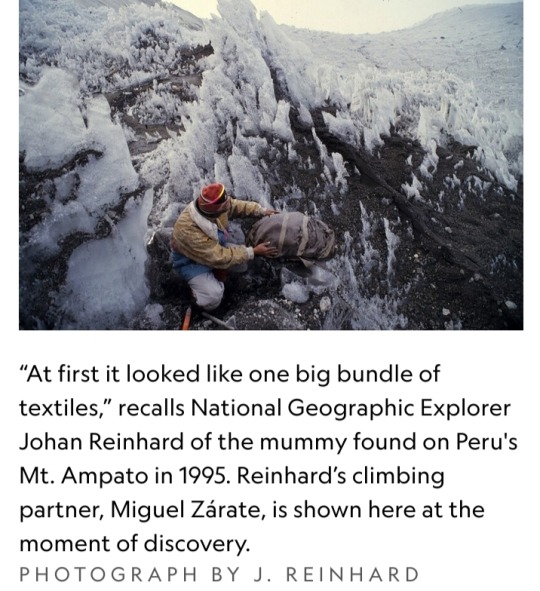
A sacrificial offering
When National Geographic Explorer Johan Reinhard encountered the mummy, also known as Juanita, atop 21,000-foot Mount Ampato during a 1995 expedition, he knew he had discovered something spectacular.
“At first it looked like one big bundle of textiles,” Reinhard recalls. Then he saw the wizened face amid the folds of fabric.
Here was a young victim of the elusive Inca ritual known as capacocha.
Capacocha mostly involved the sacrifice of children and animals who were offered to the gods in response to natural disasters — to consolidate state power in far-flung provinces of the Inca Empire, or simply to please the deities.
The ritual played an important part in sustaining the Inca Empire. It would involve feasts and grand processions to accompany the children, who appear to have been chosen for their beauty and physical perfection.
Being selected for sacrifice, researchers believe, would have considered a deep honor by the child’s family and community.
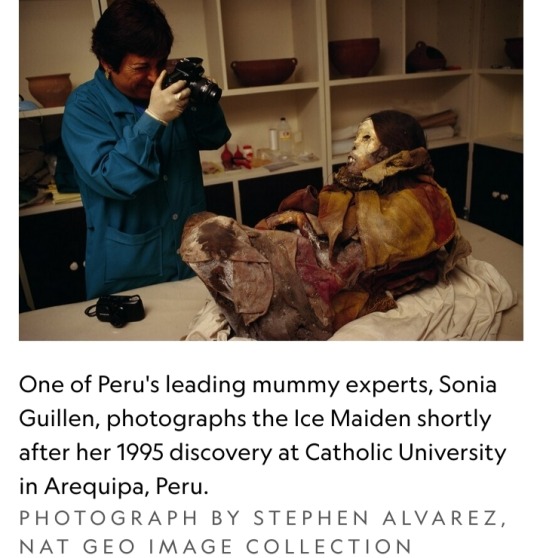
Most of the information we have on capacocha, however, is second hand, notes Dagmara Socha, an archaeologist with the Center for Andean Studies at the University of Warsaw who studies the ritual and commissioned the facial reconstruction of the Ice Maiden of Ampato.
“No European colonist ever saw the ceremony,” she explains.
Despite gaps in the historical record, the high-altitude archaeological finds of more than a dozen Inca children on Ampato and other mountains point provide critical evidence for what happened during these rituals.
The means of sacrifice varied, perhaps due to customs related to specific gods. Some children were buried alive or strangled; others had their hearts removed.
The Ice Maiden’s life ended with a single blunt-force blow to the back of the skull.
In search of the Ice Maiden
Oscar Nilsson knows that skull intimately: He spent months with a replica of it in his Stockholm studio, eventually fashioning a sculpture of the 14-old-girl that, glimpsed from afar, almost seems alive.
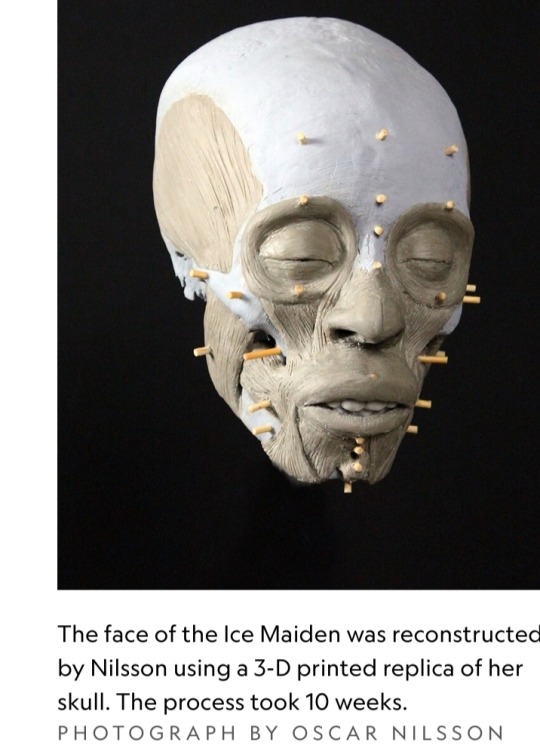
It’s a two-step process, says the Swedish archaeologist and sculptor.
First, Nilsson immerses himself in the world of his subject with an archaeologist’s eye for detail, digesting as much data as possible to understand what she might have looked like.
Even without a mummified face, he can extrapolate the likely depth of the facial tissue that once draped over those bones, using everything from CT scans to DNA analyses to information about diet and disease to make educated guesses about the individual’s face.
Then came the handiwork. Nilsson printed a 3-D replica of the Ice Maiden’s skull, plugging wooden pegs into its surface to guide the depth and placement of each hand-crafted, plasticine clay muscle.
Eerie eyes, masseter muscles, a nose, the delicate rope-like tissues that constitute a human face: each was added in turn.
After making a silicone mold of the bust, he added hundreds of individual hairs and pores in shades of brown and pink.
It took ten weeks.
Following the Inca Gods
The result, wrapped in robes woven by local women from Peru's Centro de Textiles Tradicionales, is the main attraction at “Capacocha: Following the Inca Gods” at the Museo Santuarios Andinos in Arequipa, Peru through November 18.
The reconstruction will be displayed alongside the Ice Maiden’s mummy, accompanied by the stories of 15 other children selected for capacocha atop Ampato and other Andean peaks.
Their ages range from 3 to about 13. The mummies and skeletal remains of several are featured as 3-D models at the exhibition, which also showcases holographs of some of the sacred items buried alongside them.
These natural mummies offer scientists tantalizing clues about their last days.
When Socha and colleagues conducted toxicological and forensic analyses of the remains of a toddler and four six-to-seven-year-old victims featured in the exhibition, they found they were well cared for in the months before their sacrifice.
They were fed a steady diet of coca leaves, ayahuasca vine, and alcohol in the weeks before their deaths — not as much to intoxicate them as to keep them sedated and anxiety-free as the timeline hurtled toward their sacrifice.
“We were really surprised by the toxicology results,” says Socha.
“It wasn’t only a brutal sacrifice. The Inca also wanted the children to be in a good mood. It was important to them that they go happily to the gods.”
High altitude, psychogenic substances, the spectacular view, the knowledge the afterlife was near — all must have made for an astonishing ceremony, says Reinhard.
“The whole phenomenon must have been overpowering.”
During the last phase of his reconstruction, Nilsson spent hours contemplating and attempting to capture the young girl’s presence 500 years after her death.
The result is both unsettlingly realistic and jarringly personal.
“She was an individual,” the forensic reconstructionist says.
“She must have understood her life would end on the mountaintop in a couple of weeks. We can only hope that she believed in the afterworld herself.”
For Reinhard, finally seeing the face of the girl he carried down the mountain on his back decades ago brought the Ice Maiden’s story full circle.
“It brings her back to life,” he says. The reconstruction brings the focus as much to her culture and daily life as to her spectacular death.
But Nilsson never forgot the way the Ice Maiden died, even as he brought her to life through his reconstruction.
More than anything, he says, he wanted to capture a sense of being frozen — a nod not just to her icy, mummified future but to a girl teetering on the edge of eternity, though still very much alive.
“She knew she was supposed to smile, to express pride,” he says. “Proud to be chosen. But still very, very afraid.”
#Ice Maiden of Ampato#Inca Girl#archaeological analysis#forensic reconstruction#human sacrifice#Peru#3-D bust#Juanita#Johan Reinhard#Mount Ampato#National Geographic#National Geographic Explorer#expedition#1990s#20th century#capacocha#Inca ritual#Inca Empire#Dagmara Socha#facial reconstruction#archaeology#archaeologists#Oscar Nilsson#sculptor#Centro de Textiles Tradicionales#Capacocha: Following the Inca Gods#Museo Santuarios Andinos#natural mummies#culture#forensic reconstructionist
2 notes
·
View notes
Text
Juanita Reconstruction Illustrates Importance of Bioarcheology

A November 2023 CNN article said scientists have reconstructed a teenage Incan girl who lived 500 years ago. Discovered in 1995 in ice, the girl had been sacrificed and buried near the dormant volcano at the Ampato summit in Peru. This discovery illustrates the wonder of bioarchaeology, which contributed to bringing the century-old story to life.
Bioarchaeology is a branch of archaeology that studies bones and biological materials found around human remains. Scientists can use the bones to gather information about how people lived.
Bioarchaeology has played a critical role in reconstructing histories, including that of the Incas, who lived in Peru and Chile for more than 300 years. Their known history began in around 1,200 and ended in 1533, but historians cite the defeat of the Chanca in 1438 as the onset of the rise of the Incan Empire. The Incas went on to organize institutions and build an extensive network of roads connecting towns and villages.
The Incan culture included sacrificial ceremonies to appease the gods and protect the community from natural disasters such as volcanic eruptions and earthquakes. The Incas sacrificed young women and children because of their purity and beauty.
Researchers believe that Juanita died as a sacrifice because of her ceremonial clothing. The teen's burial site also contained ceramic objects, gold and silver female figures, woven bags, pottery, and llama bones. The ceramic objects featured geometric shapes, which researchers believe may have been a part of the Incan communication system.
In 2018, 23 years after the discovery of Juanitain the Peruvian mountains, Dr. Dagmara Socha, a bioarcheologist at the Center for Andean Studies at the University of Warsaw in Cusco, Peru, began investigating Juanita and other remains and objects found at the Ampato, Pichu Pichu, and Misti volcanoes. They discovered that children and women chewed coca leaves and drank ayahuasca during the weeks leading up to their sacrifice. This finding suggests that the hallucinogenic and psychotropic drugs lessened their anxiety before the sacrifice, a fact consistent with Juanita’s ingestion of alcohol and coca before her sacrifice.
Further, after analyzing Juanita’s hair samples, researchers learned that she may have come from an elite family since her diet included meat. Juanita was between 13 and 15 when she died after being struck on the head, according to CT scans.
In March 2022, Swedish artist Oscar Nilsson used CT scans of Juanita to build a 3D model of her skull, which guided in reconstructing her face and body. The artist drew his reconstruction from tomography scans and information on her age and complexion. He relied on tissue depth markers based on skull measurements to understand her facial proportions. The reconstruction of Juanita took 400 hours, and her face alone took six months. Nilsson was methodical in his reconstruction, relying on forensic techniques to make the teen appear realistic. This reconstruction puts a face to the history of the teen and her people, which may not have been possible without bioarchaeology. Researchers and scientists have given Juanita the nicknames "Ice Maiden," since she was discovered in ice, and “the Lady of Ampato.”
0 notes
Photo
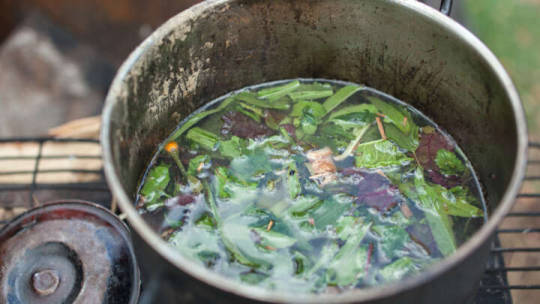

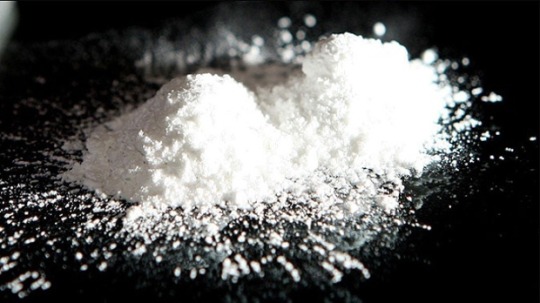
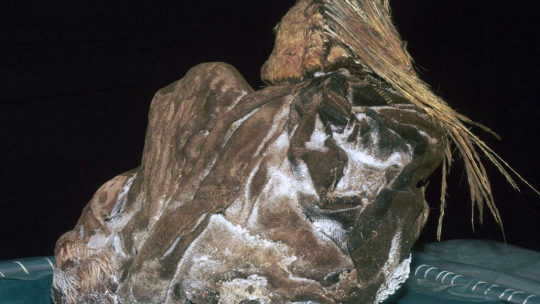

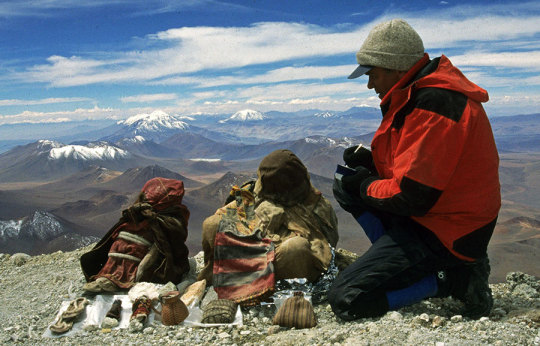
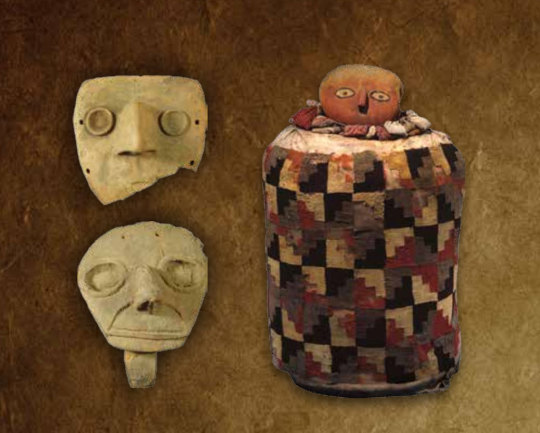
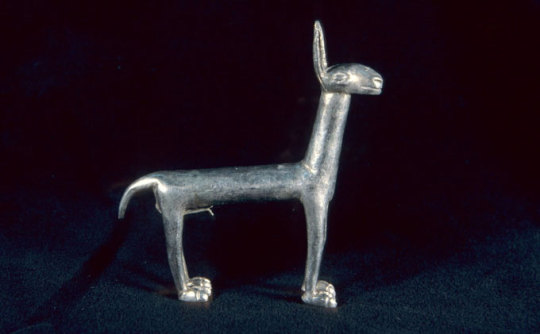
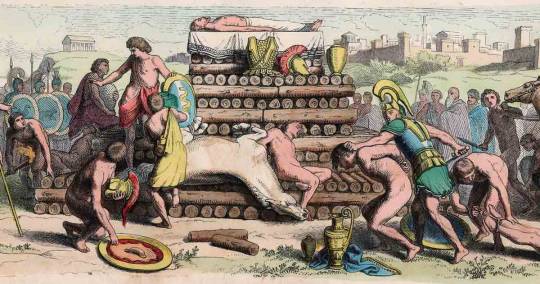

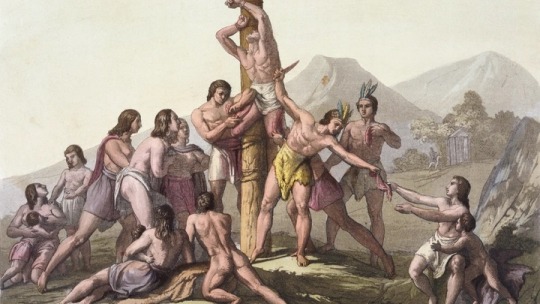
Children Sacrificed by Incas Found With Cocaine and Ayahuasca in Their Bodies
Researchers have found evidence that hallucinogenic plants were used on children as part of sacrificial rituals in Peru hundreds of years ago.
Ritual ceremonies played an important role in the Inca empire, and one of the most prominent ceremonies was the Capacocha ritual, in which humans and material goods were sacrificed in the belief that this could help avert natural disasters such as earthquakes, volcanic eruptions, or droughts, or to coincide with political events.
In 1995, researchers came across sacrificed individuals on the Ampato volcano in southern Peru whilst on an expedition. They discovered the burials of two children, estimated to have been aged between 6 and 7 years old, as well as objects made of silver and gold. It is thought the children were killed more than 500 years ago.
This month, a team of scientists from Poland, Peru and the U.S. announced in a research paper they had conducted toxicology tests on two of the children, after they were subject to an examination in 2019. The researchers studied the hair of one of them, referred to as Ampato 2, and the fingernails of the other, referred to as Ampato 3.
The researchers were able to identify cocaine in both the samples they studied—something that has been investigated before in other studies of Capacocha rituals.
The individuals from Ampato were the first to be tested for the presence of other drugs. The tests came back positive for harmine and harmaline, and the only possible source for these two chemicals in the Andean region is Banisteriopsis caapi, a South American jungle vine that is used in the preparation of ayahuasca, a hallucinogenic drink.
In their research paper, the scientists state that the consumption of ayahuasca could have been linked to a desire to communicate with the spiritual world. In addition, Banisteriopsis caapi may have been used alone for antidepressant effects.
"The interesting result was the composition of the ayahuasca decoction," Dagmara Socha, a researcher at the University of Warsaw Center for Andean Studies and co-author of the paper, told Newsweek. "The present-day ayahuasca is a mix of lianas of Banisteriopsis caapi and other plants, primarily Psychotria viridis, a source of DMT.
"Harmine is necessary to orally activate DMT, which is hallucinogenic, and combinations of these two are one of the most potent hallucinogenic drugs. However, in our study, we discovered only harmine in hair. The harmine alone also causes lesser hallucinogenic states and is an antidepressant.
"This could mean that DMT incorporation into human hair is weak and this is why we did not find it. Another explanation is that Incas used only lianas without Psychotria viridis, because they were interested in the antidepressant properties of Banisteriopsis caapi. Spanish chroniclers mentioned that it was important for children to go happy to gods. So maybe the Incas used it to calm down the victims during the pilgrimage from Cuzco to the summit."
The Inca empire existed in Peru between the 1400s and 1533, eventually growing to become the largest empire ever seen in the Americas according to World History Encyclopedia.
#Children Sacrificed by Incas Found With Cocaine and Ayahuasca in Their Bodies#archeology#archeolgst#hallucinogenic plants#ancient artifacts#history#history news#ancient history#ancient culture#ancient civilizations#inca empire#Inca history
14 notes
·
View notes


